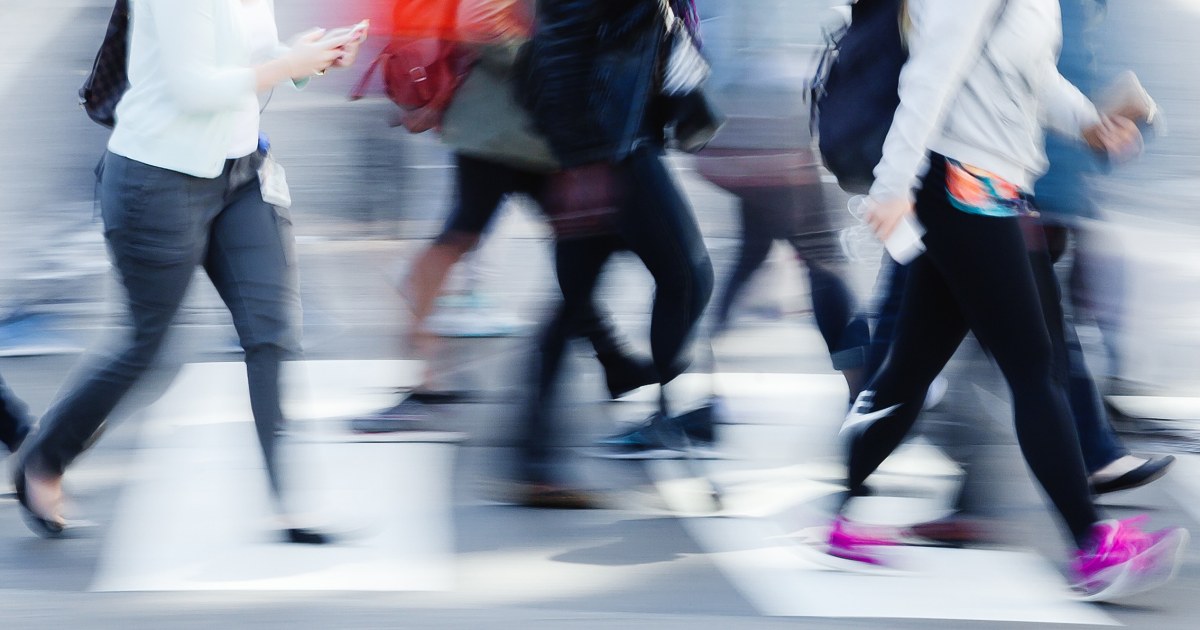
The U.S. last year had the highest number of pedestrian fatalities since 1981, with 7,508 people killed by vehicles, according to a recent report by the Governors Highway Safety Association.
Pedestrian deaths have shot up 77% since 2010, according to the report, which was based on state government data. Last year, about 20 people a day were killed walking in the street. (Oklahoma did not report data because of a technical issue, but the state averages 92 pedestrian deaths a year, so last year’s total is likely even higher.)
Road safety experts suggested several factors behind the trend: a pandemic-fueled increase in reckless driving, skyrocketing sales of trucks and larger vehicles and higher rates of people moving to suburbs with roads ill-suited for pedestrians.
Pam Shadel Fischer, senior director of external engagement at the Governors Highway Safety Association (GHSA), said the 41-year high signals a “crisis” in pedestrian safety.
“It has been getting worse every year,” Fischer said. “We’ve focused so much on making vehicles safer for the people inside, but we’ve sort of lost track of what we are doing for the folks outside vehicles to really address their safety.”
Reckless driving habits linger after the pandemic
The pandemic brought an increase in reckless habits like speeding and texting while driving, experts said, since drivers encountered more open roads and fewer law enforcement officers. Though more people have resumed commuting and road congestion has returned, the dangerous driving trends show no signs of slowing.
In 2021, drivers were speeding in 8% of pedestrian deaths — up from 6% to 7% pre-pandemic, according to the GHSA. The average risk of death for a pedestrian hit by a car going 58 miles per hour is 90%, compared to 10% when hit at 23 mph.
The percentage of road accidents involving texting or calling is hard to measure because drivers are often reluctant to admit they were using their phones at the time of a crash, according to Cara Hamann, an assistant professor of epidemiology at the University of Iowa College of Public Health. But she suspects phone use has played a role in the rising pedestrian deaths.
“We see it in younger drivers, certainly, but I think across the board driver distraction is a problem,” Hamann said. “More and more people have smartphones and are using social media apps and things like that.”
The Traffic Safety Administration reported that 3,522 people were killed by distracted driving in 2021.
Sales of larger, more dangerous vehicles have climbed
After speed, the size of the vehicle is the next most crucial factor in whether a pedestrian crash turns fatal. SUVs made up 3% of the vehicles made in the model year 1983, according to a report provided to NBC News by the Insurance Institute for Highway Safety. By 2022, the share had risen to 57%.
New passenger cars, meanwhile, fell from 80% to 27% in the same time period, the report shows.
The taller profiles of SUVs and trucks means that, in a collision, pedestrians are more often hit in the torso, which increases the likelihood of death, according to David Harkey, the president of the Insurance Institute for Highway Safety.
Although more new vehicles have crash-prevention technology these days, such as automatic emergency braking systems, Harkey said it will take a while to see the results of those technologies.
“The challenge is these are new vehicles, and the average age of a vehicle these days is about 12 years,” Harkey said. “So it takes a long time for the fleet to turn over before you get the overwhelming majority of vehicles on the roadway that have this technology.”
Over the past decade, the number of SUV crashes that led to pedestrian deaths climbed 120%, compared to a 26% increase in crashes involving passenger cars, according to the GHSA report.
“We are a country that has an appetite for these vehicles,” Fischer said. “We have to recognize that we want these bigger vehicles, but we also have to think about operating them as safely as possible.”
Deaths on suburban roads are increasing
Pedestrian fatalities are also linked to decades-old roadway design flaws in urban and suburban areas, the experts said. As more people have moved to the suburbs, deaths on arterial roads, which are not freeways but still high-capacity, have become increasingly common.
Around 60% of pedestrian fatalities in 2021 were on arterial roads, according to the GHSA report.
Hamann said that, as costs of living have climbed in major cities, more lower-income people have moved to the suburbs. Those residents are less likely to have access to cars, so may be forced to walk on busy roads without sidewalks, she said.
The GHSA report found that 69% of pedestrian fatalities happened on roads without sidewalks in 2021, compared to 59% in 2017.
Many suburban arterial roads also lack sufficient crosswalks, experts said. If crosswalks only come every quarter or half-mile, Hamann said, many people will opt to jaywalk through multilane roads.
“It’s sort of this mismatch between where we see more and more people on foot and how that infrastructure was never really designed for the people on foot,” Hamann said. “Our suburbs are primarily designed around vehicles.”
Communities that were historically redlined also report higher rates of pedestrian fatalities, according to a study published in March in the American Journal of Public Health. Relative to other urban and suburban areas, these communities were not designed with safety and functionality in mind, according to Dan Gelinne, a senior research associate at the University of North Carolina Highway Safety Research Center.
Whereas the proportion of white pedestrians killed on the road fell from 47% in 2018 to 41% in 2020, the proportions of Black and Hispanic pedestrians killed each rose slightly in those years.
“It reflects a history of historical underinvestment in the neighborhoods that may be predominantly Black or people of color or lower income,” Gelinne said. “That underinvestment really has resulted in a higher risk of death and injury.”






